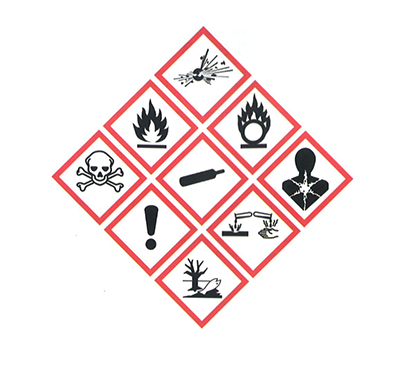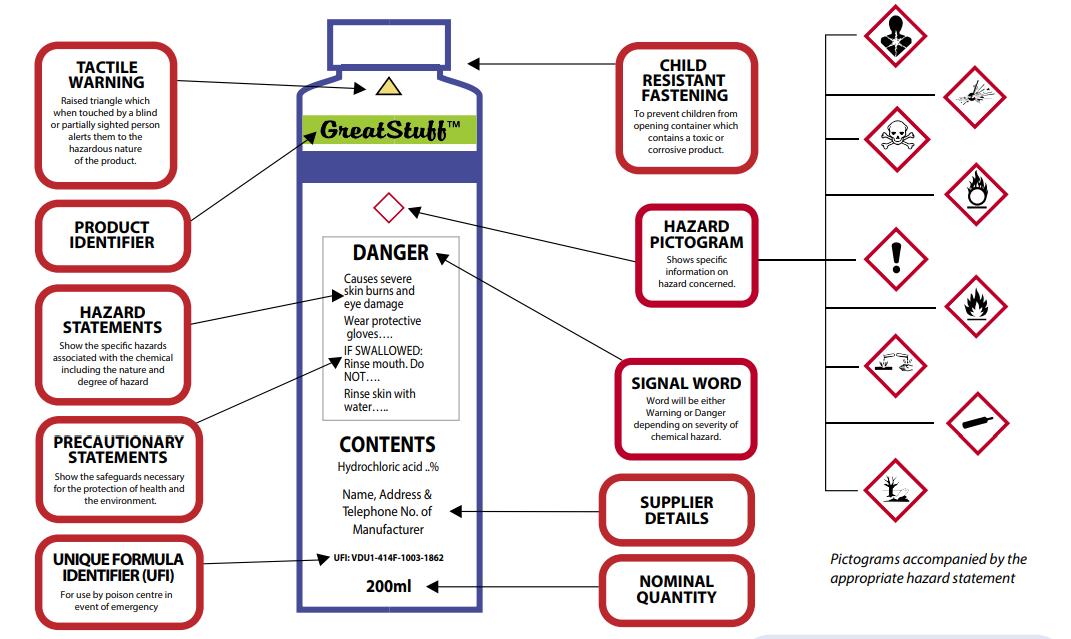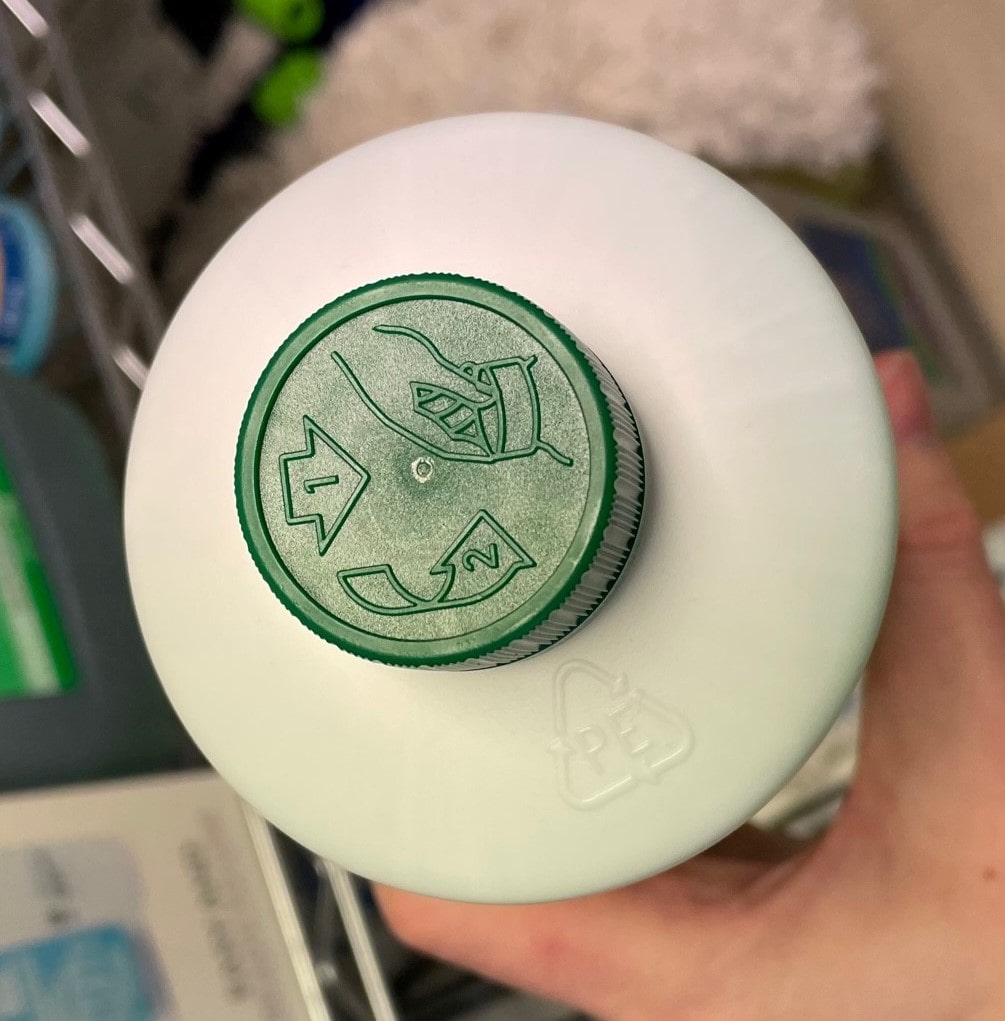Motor Factors
Car detailing and maintenance products
Chemical products, used to maintain and clean motor vehicles are used every day both at home and at work and are widely available for sale in motor factors, retail stores and online. These include products such as solvent based paints, thinners, isocyanate based foams/paints, engine oil, sealants, adhesives, screen wash, anti-freeze, paint strippers, cleaning products and air fresheners. These products are used to repair cars, paint cars, clean cars and for car detailing and valet?. Hazardous chemical products must have a label displayed on the packaging which identifies the hazards of the product by hazard pictogram(s), a signal word and assigned hazard statement(s) along with precautionary statements offering general advice along with information on how to prevent exposure, how to respond in the event of an accident and how to store and dispose of the chemical product safely.

Do you use car detailing or maintenance products at home?
Car detailing and maintenance products aren’t hazardous if used properly and the safety information provided is taken note of. However, some need more careful handling than others. The information on the back of a product label will help y identify the more hazardous ones; what the risks are and advise you how to use chemical safely. So it is really important that you always read the safety information on the back of the chemical product before you use it.
If these products are not used safely, there are potential risks. The potential to cause harm depends on a number of factors including how hazardous the product is, how long and how often you are exposed to it. When using motor factor products to maintain and clean motor vehicles, it is important to know how hazardous they are and what to do in the event of an accident. It is also important to ensure that you have the necessary controls in place to keep you, and the environment safe. Below are some examples of hazard pictograms which depict the hazards associated with a product, to see a full description of each pictogram please visit http://clpireland.ie/
Do you use car maintenance or detailing products at work?
If you use motor factor products at work , such as in a garage or car wash, then in addition to reading the safety information on the label you also need to undertake a chemical risk assessment as part of your workplace safety statement before you use the product. The safety information provided on the product label along with the safety data sheet (SDS) of the product can be used as tools to ensure its safe handling, use, storage and disposal. The SDS should be provided to you on first purchase from your supplier.
See our information sheet on hazardous chemicals in the motor vehicle repair industry for more information on how to protect yourself and those working with you.
Are you a retailer of motor factor products?
All suppliers of motor factor products are responsible for ensuring that the hazardous chemicals they sell in-store or online are correctly labelled with the relevant hazard information and packaged accordingly. If you identify there is an issue with the labelling of a product, you should send the product back to your supplier until the issue is rectified, unless you are also the importer, in which case you are directly responsible for compliance. Below is an example of what a hazard label should include:

Child resistant fastenings (CRF), compliant with relevant standards, are required for products sold to the general public which are classified as toxic or corrosive. Similarly tactile warnings of danger (TWD) are required on packaging of many chemical products. It is the responsibility of the retailer to ensure they do not sell chemical products without the required CRF’s or TWD to the general public.
Some motor factor products contain restricted substances and cannot be sold to the general public in store or online, for example, screen wash products containing methanol, paint stripper containing dichloromethane or products classified and labelled with ‘May cause cancer’, ‘May cause genetic defects’ and ‘May damage fertility or the unborn child’ . Retailers must ensure that they comply with the conditions of each restriction and put measures in place to ensure compliance e.g. place restricted products behind the counter or in a trade only section.
If you are retailer please read our leaflet Retailers Duties when Selling Chemical Products

Do you import chemical products?
Motor factor products being placed on the Irish market that are imported from outside the EU, including from Great Britain, must comply with the provisions of the REACH, CLP, Detergent and PIC Regulations. Irish companies who source their motor factor products from within the EU are not importers and do not have any importer duties as they are considered to be downstream users. Our role finder tool to help you identify your role in the supply chain. However, if you are identified as an EU importer, then you will have a range of duties including:
- REACH registration if importing an ingredient substance on its own or in a product at > 1 tonne/PA
- Notify certain product information to the National Poisons Information Centre (NPIC)
- Classify, label and package all hazardous products in accordance with the legislation and ensure they have an EU supplier listed on the label.
- Supply Safety Data Sheets to professional users on first supply or at point of sale (if also a retailer).
See our Chemical importer Information Sheet and new importer information